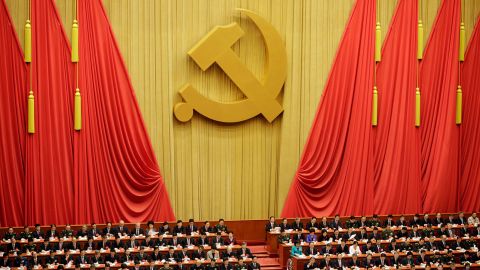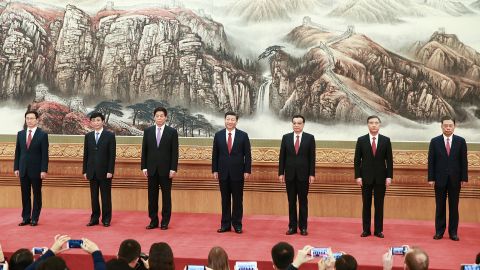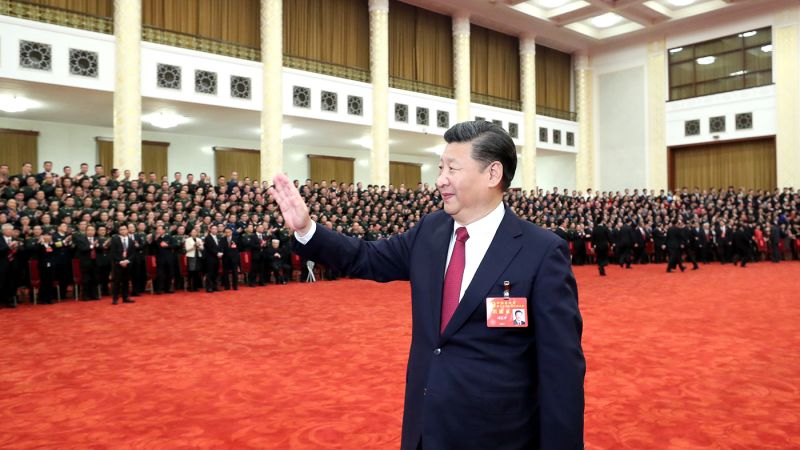Editor’s Note: A version of this story appeared in CNN’s Meanwhile in China newsletter, a three-times-a-week update exploring what you need to know about the country’s rise and how it impacts the world. Sign up here.
CNN
—
Xi Jinping is poised to cement his role as China’s most powerful leader in decades this month, when members of the country’s ruling Communist Party meet for a twice-a-decade leadership reshuffle.
In recent years, these meetings have seen a streamlined transfer of power: the convention is for the top party leader, having completed two five-year terms, to pass the baton to a carefully chosen successor.
But this year, Xi is expected to smash that precedent, taking on a third term as general secretary of the party and pitching China into a new era of strongman rule and uncertainty over when or how the country would see another leader.
As a result, the 20th Party Congress is among the most consequential and closely watched party meetings in decades, and will reveal much about the direction of the world’s second-largest economy for the next five years.
Here’s what you need to know about the events – and how China chooses its leaders.
The Chinese Communist Party’s National Congress, known simply as the Party Congress, is a roughly week-long conclave that meets once every five years to appoint new leaders, discuss changes to the party constitution and lay out a policy agenda for the country.
The Congress itself, typically held in October or November, convenes nearly 2,300 carefully selected Communist Party members, called delegates, from around the country. These delegates range from top provincial officials and military officers to professionals across sectors, and so-called grassroots representatives like farmers and industrial workers. Just over a quarter are women, while about 11% come from ethnic minorities, according to figures released ahead of this year’s Congress.
This cohort also includes the hierarchy of the Chinese Communist Party, which is among the world’s largest political parties with more than 96 million members.

There are three distinct rings of power in that hierarchy. Around 400 of the National Congress delegates are members of the Party’s elite Central Committee, which in turn includes the members of the upper echelon: the 25-member Politburo and its Standing Committee – China’s most powerful decision-making body, typically composed of five to nine men and led by the general secretary.
The Politburo members are typically men from China’s dominant ethnic Han majority – with only one woman in the current group – who take important roles in the government.
The week-long meeting is all about the Communist Party – the overarching source of power in China – and will ultimately guide who fills government positions. However, it is distinct from a state government meeting.
For example, while Xi is expected to be named the party’s general secretary following the Congress, he won’t be confirmed for a third term as China’s head of state, or President, until an annual meeting of the rubber-stamp legislature in March.
While votes are held at the Party Congress, this is widely viewed as a formality – not a true election process. Instead, the real decisions are believed to be made during an opaque process involving top leaders that begins long before the Congress.
During the Congress, the delegates will cast votes for a new Central Committee – the principle party leadership body of about 200 full members and another roughly 200 alternatives, which meets regularly and is responsible for formally selecting the members of the Politburo.
Immediately after the conclusion of the Congress, the newly formed 20th Central Committee meets for its first plenary session, where they select the Politburo and its Standing Committee.
Watchers of elite Chinese politics believe the decisions over who will fill these top spots are typically made during months of back-room negotiations between top party leaders, where different power players or factions will typically try and advance their candidates, with choices settled well before the Congress starts.
This time, Xi is believed to have largely eliminated his rivals and dampened the lingering power of party elders, who in the past were thought to have played a strong role in such decision-making.

Following their selection by the Central Committee, the Party’s new top leaders will make a choreographed entrance into the Great Hall of the People in Beijing, walking in order of importance.
As in 2017, Xi is expected to lead the group into the room as the newly-confirmed general secretary and introduce the other members of the new Standing Committee in a nationally televised event.
The line-up will provide a rare glimpse into the black box of Chinese elite politics. China watchers will be waiting to see how many members of the Standing Committee are selected and who they are, as signs of whether Xi has absolute power or has made concessions. They will also be looking for a potential successor in the midst, which could give a clue into how long Xi intends to rule.
For more than two decades, a new general secretary has been appointed at every other Congress.
But since the last Congress in 2017, Xi has signaled plans to keep a firm grip on all aspects of what’s considered a trifecta of power in China: control over the party, the state and the military. For one, at the last Congress, he broke with tradition and did not elevate a potential successor to the Standing Committee.
Then, months later, China’s rubber-stamp legislature eliminated the term limits for President of China. This was widely seen as enabling Xi to continue to a third term as head of state, while also retaining his control of the party – where the true power lies.
While there are no formal term limits for general secretary, staying in the top party role would also require Xi to break with another unwritten rule: the party’s informal age limit.
The norm is that senior officials who are 68 or older at the time of the Congress will retire. At 69, Xi would flout this recent convention by staying in power. What’s less clear is whether he will seek to give other Politburo allies exemptions, disrupting one of the few neutral methods the party has to ensure turnover, or whether, in contrast, he could lower the retirement age for others to oust some existing members.
The Congress opens with the general secretary reading out a work report summarizing the party’s achievements of the past five years and indicating the policy direction it will take for the next five.
This year, observers will be watching for signs of the party’s priorities when it comes to its restrictive zero-Covid policy, handling of steep economic challenges, and stated goal of “reunifying” with Taiwan – a self-governing democracy the Communist leadership claims as its own despite never having controlled.
Xi is also expected to strengthen his legacy, likely through amendments to the party constitution – a regular feature of each Congress.
Last month, the Politburo discussed these changes during a scheduled meeting, according to a government statement that did not include specifics.
In 2017, Xi became the first leader since Mao Zedong – Communist China’s founder – to have his philosophy added to the constitution while still in power, and observers have suggested Xi’s key principles could be further enshrined this time around.
These details will be signs of how much power Xi holds within the upper echelons of the party – and how strong his backing is as he steps into his expected, norm-breaking third term leading one of the world’s most powerful countries.

